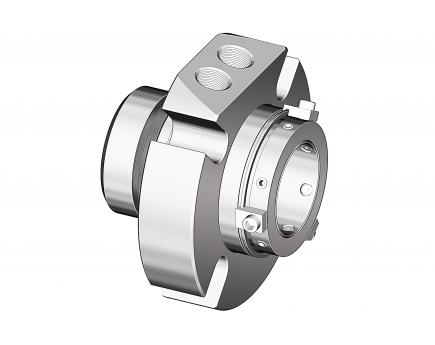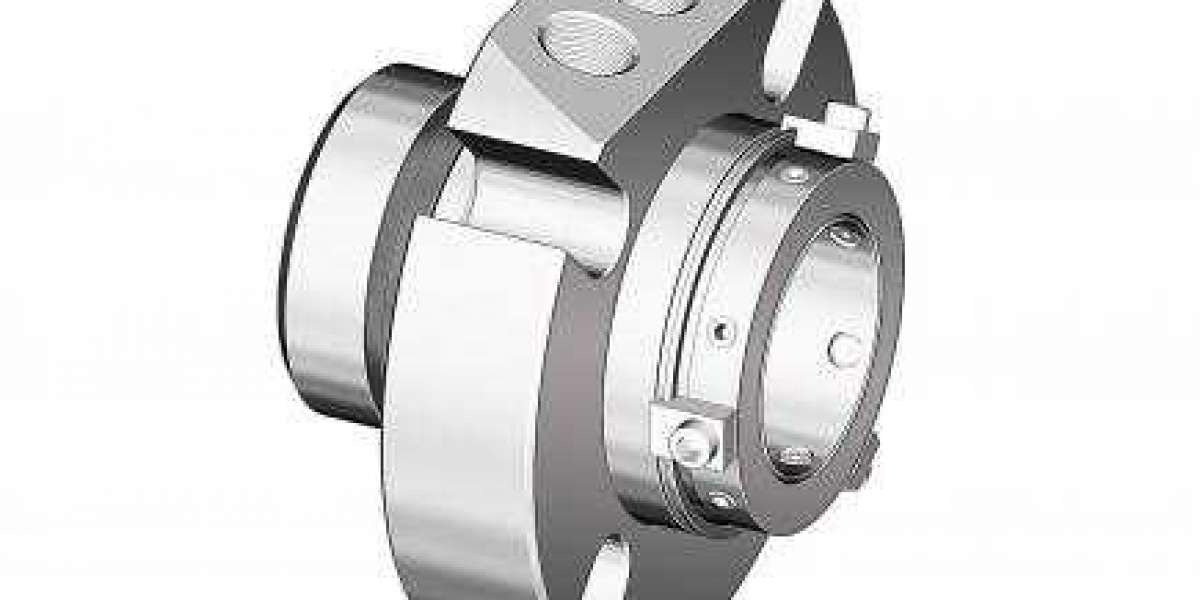Compared with the single mechanical seal, the double mechanical seal has one more friction pair. The two friction pairs can be composed of two moving rings and two static rings respectively, or two moving rings sharing one static ring or two static rings sharing one moving ring. There are several ways of classifying double mechanical seals.

1. According to the pressure of the sealing liquid system, it can be divided into double-sealed with pressure and double-sealed without pressure.
The pressure of the pressurized double-seal sealing fluid system is generally 0.01--0.03MPa higher than the pressure before the primary seal. In this way, when the primary seal leaks, the sealing liquid will enter the pump to ensure that the medium in the pump will not leak to the outside world. Since the sealing liquid enters the pump, the pressure and liquid level of the sealing liquid system are reduced, and the leakage monitoring and alarm of the sealing can be realized.
The pressure in the pressureless double-sealing sealing system is generally normal pressure or micro-pressure, which is lower than the pressure of the sealing cavity before the primary sealing. When the primary seal leaks, the medium in the pump will enter the sealing fluid system, resulting in an increase in the pressure and liquid level of the sealing fluid system. Leakage monitoring and alarm can be realized through a pressure switch or a liquid level switch. Monitoring the failure of double mechanical seals through the sealing liquid system is also one of the most important forms that distinguish them from single-end mechanical seals.
2. According to the arrangement of friction pairs, it is divided into four types: radial type, face-to-face, back-to-back, and series.
The radial double mechanical seal includes a pair of mutually matched moving rings and static rings. Its main technical structural feature is that a circular ring groove is correspondingly opened on the matching end faces of the moving ring and the static ring to form two radial matching friction pairs. The static ring is provided with a drain hole to form a radial double mechanical seal. The overall structure is simple and compact, the structure space is small, the installation and use are convenient, and it is especially suitable for occasions where the radial installation size is limited.
Face-to-face double mechanical seal has two forms: static ring face-to-face and dynamic ring face-to-face. The face of the static ring is an integral moving ring, and the face of the moving ring is an integral static ring. However, due to problems such as machining accuracy and replacement cost after mechanical seal failure, the face-to-face double seal is rarely used in mechanical seals for fluid pumps and is generally used on occasions with small seal cavity sizes. Back-to-back or serial mechanical seals can fully cover the applicable conditions of face-to-face mechanical seals. Dry gas seals are used for light hydrocarbons, viscous, polymeric fluids, and harmful gases, and face-to-face mechanical seals can be used for non-contact designs. The face-to-face mechanical seal requires that the pressure of the sealing liquid is greater than the pressure of the medium, which is a double seal with pressure, otherwise, the force on the dynamic and static rings of the inner mechanical seal is unreasonable. The face-to-face structure is mostly used for the cartridge structure, which can be used as a single-end surface or a double-end surface by adding sealing liquid.
The back-to-back double mechanical seal can also be made into the assembly, which is convenient for disassembly and assembly and easy maintenance, so it is used more. The sulfur unit double mechanical seal is back-to-back. The back-to-back double seal has two moving rings and two static rings respectively, and the primary seal is outflow. Because of its wide applicable working conditions and wide application, a double mechanical seal in a narrow sense refers to a back-to-back double mechanical seal. Back-to-back double seals are pressurized double seals. When the primary seal fails, the pressure and liquid level of the sealing fluid system will decrease. The power to circulate the seal fluid is provided by the built-in pumping ring.
The series mechanical seal is two or more sets of single-end mechanical seals arranged in the same direction to form a series mechanical seal, and two sets of single-end mechanical seals form a series double mechanical seal. This sealing method reduces the pressure of the sealing chamber step by step, and the medium does not leak. Due to its compact structure, the tandem double-face seal can be applied to the occasions of medium load with small shaft diameter, small axial size, and large rotational speed. The inner end is a balanced mechanical seal, and the outer end is an unbalanced mechanical seal with a pump effect ring. The tandem double mechanical seal can be made into a double seal with pressure or a double seal without pressure, and the double seal without pressure is the most common. The sealing liquid provides cooling and lubrication of the sealing surface and is circulated by the built-in pump effect ring.



